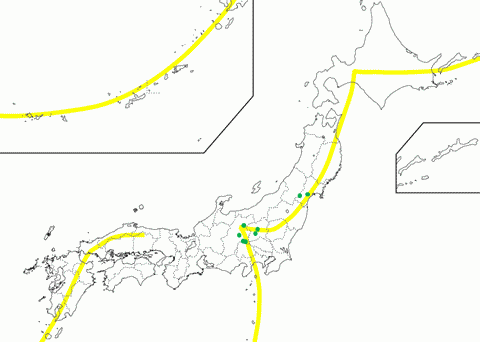Pyroclastics
Chemical Process (Liquid-phase Growth) - Closed system under ground (Melt precipitation)
Required Geological Setting
Island arc volcanoes, Intra-oceanic arc volcanoes
Occurrence
Minerals included in pyroclastics, fragments ejected from volcanoes by volcanic activities. Pyroclastic fragments by cooled magma are called essential fragments. Reflecting chemical composition of magma, there are rhyolitic, dacitic, andesitic, and basaltic pyroclastics. Fragments of wall rocks of magma chamber may ejected with pyroclastics, and these fragments are called accidental fragments. Accidental fragments are subjected to Hornblende-hornfels facies, Pyroxene-hornfels facies, or Sanidinite facies contact metamorphism by heat of magma. Pyroclastics are classified by those sizes to volcanic ashes ( < 2mm in diameter), lapilli (2-64mm), and volcanic blocks ( > 64mm ). Single crystals of minerals may be included in pyroclastics as ashes or lapilli, and those are called crystal ashes or crystal lapilli. Solidifed pyroclastics are called Tuff, Lapilli tuff, or Lapilli stone. Rocks including both volcanic ashes and volcanic blocks are tuff breccia ( ashes > blocks ) or volcanic breccia ( blocks > ashes )

Distribution of pyroclastics associating crystal ashes or crystal lapilli in this site. Yellow lines are volcanic fronts.
Mineral Assemblages
Phenocrysts of volcanic rocks corresponding to the chemical composition of magma: Rholite, Dacite, Andesite, Basalt.
Localities
- Shishiiwa (Volcanic tuff)
- Goroku (Volcanic tuff)
- Mount Haruna (Pumice)
- Iwo Jima (Crystal lapilli)
- Daikokuten (Crystal lapilli)